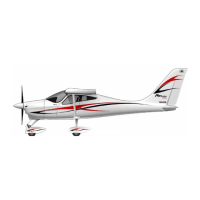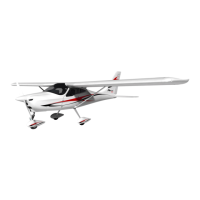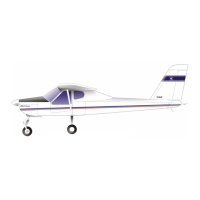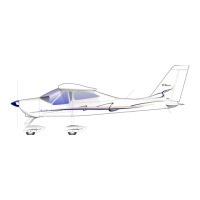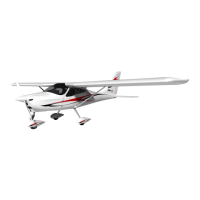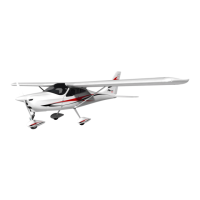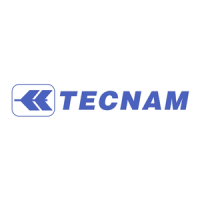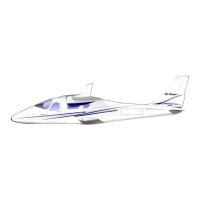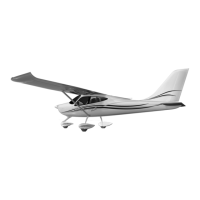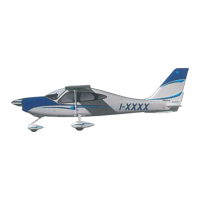Do you have a question about the Tecnam P92 Echo Super and is the answer not in the manual?
Recommendations for servicing and knowledge of aircraft limitations and qualities for safer operation.
Details on aircraft dimensions, weights, and general specifications.
Overview of aircraft systems including engine, propeller, fuel, oil, and cooling.
Information on maximum, standard, and specific aircraft weight limits.
Procedure for reporting possible safety of flight concerns regarding the aircraft.
Guidance on obtaining spare parts and lists of disposable replacement parts.
Procedures for moving, parking, and tie-down of the aircraft.
Instructions and safety precautions for jacking the aircraft.
Procedures for leveling the aircraft and setting control surfaces.
Step-by-step guide for adjusting the trim tab on the stabilator.
Guidelines and procedure for weighing the aircraft.
Method for determining the aircraft's Center of Gravity (CG).
Procedures for preventing and treating corrosion on aircraft parts.
A section for tracking service directives.
General servicing tasks including daily checks and as-needed maintenance.
Daily checks and inspections for aircraft operation.
Maintenance tasks to be performed as needed, such as tire checks.
Schedule and points for periodic lubrication of aircraft components.
Detailed list of lubrication points and associated component numbers.
Access points and items to inspect behind panels and fairings.
General introduction to aircraft inspection schedules and requirements.
Detailed checklist for 100-hour or annual condition inspections.
Inspection items for Fuselage, Cabin, Engine, Landing Gear, and Wing groups.
Inspection items for Empennage, Propeller, Radio, Optional, and ELT groups.
Table of components with specified service life limitations.
Description of the wing structure, attachment, and components.
Procedure for removing and installing the aircraft's wings and struts.
Description of the flap control system and its components.
Details of the aileron control system using push-pull rods and cables.
Description of the all-moving horizontal tail (stabilator) and its components.
Procedure for checking and adjusting the stabilator's balance.
Description of the vertical tail structure and attachment.
Description of the aircraft's front and aft fuselage structures.
Description of the main landing gear struts, wheels, and brakes.
Procedure for removal of the main landing gear wheel assembly.
Steps for removing and replacing the wheel bearing assembly.
Description of the nose gear assembly and its attachment.
Procedure for removing the nose gear fairings and wheel.
Detailed steps for removing the nose wheel assembly.
Specifications for nose and main tire inflation pressures.
Description and removal procedures for the engine cowling.
Technical data and features of the installed engine.
General servicing procedures for the engine and propeller.
Procedure for synchronizing engine idle speeds.
Reference to engine operator's manual for ordinary servicing.
Description of the propeller's construction and finish.
Procedure for removing the aircraft propeller.
Procedure for correctly installing the aircraft propeller.
Reference to periodic inspection schedule for the propeller.
Description of the fuel system components, tanks, and filters.
Description of the aircraft's instrument panel layout and instruments.
Details on engine instrumentation, sensors, and gauges.
Description of the pitot and static system and leak checking procedure.
Description of the exhaust system, muffler, and heat exchangers.
Description of the cabin heating system components and controls.
Description of the carburetor heating system and controls.
Description of the aircraft's hydraulic brake system components.
Procedure for draining and replacing brake fluid in the system.
Procedure for replacing worn brake pads.
Description of the aircraft's 12V DC electrical system, battery, and generator.
Identification of various markings and placards on the aircraft.
Correction table for compensating magnetic compass deviation errors.
Description and location of the parking brake valve placard.
Description and location of placards for engine throttle controls.
Description and location of placard for throttle friction lock.
Description and location of placard for cabin heat control.
Description and location of placard for carburetor heat control.
Description and location of placard for trim switch control.
Identification of fuses located on the instrument panel.
Description and location of placards for flap control switch.
Identification of generator, master, and starter controls and their placards.
Description and location of placard for choke lever.
Description and location of the generator warning light placard.
Placards indicating usable fuel quantity for each tank.
Placard for baggage compartment maximum weight and harness attachment.
Placards indicating fuel type and tank capacity.
Placards indicating type and quantity of engine oil for the reservoir.
Placard for cooling system overflow tank indicating antifreeze/water proportion.
Placard for brake oil reservoir indicating the type of oil to use.
Placards indicating main and nose tire inflation pressures.
Information on the aircraft's identification plate details.
Placards stating limitations such as no smoking and maneuvering speed.
| Manufacturer | Tecnam |
|---|---|
| Model | P92 Echo Super |
| Seating Capacity | 2 |
| Engine | Rotax 912ULS |
| Power | 100 hp |
| Stall Speed (Flaps Down) | 65 km/h (40 mph, 35 knots) |
